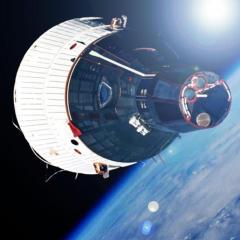Experiments furthering humanity’s ambitions in space are to be launched later this week by University of Queensland students.
UQ Space students are launching two rockets into the troposphere, each with an experimental payload – a mechanical replica of the human cardiovascular system developed in collaboration with UQ Physics Club (PAIN) and a state-of-the-art rocket live-telemetry system.
UQ Space Managing Director and engineering student Myrthe Snoeks said it is all part of UQ’s involvement in this year’s Australian Universities Rocket Competition (AURC).
“We’re incredibly excited about the competition, which is the first of its kind in Australia, and is held at a major event hosting rocketeers from New Zealand, USA, India, Germany, Netherlands, England and Japan,” she said.
“This is our opportunity to showcase our student-built rockets; Project Athena, launching to 10,000 feet, and Project Minerva, launching to 30,000 feet.
“The rockets are 2090 millimetres and 2650 mm long respectively, and will travel so fast that they will break the sound barrier, reaching maximum speeds of Mach 1 and Mach 2.25.
“UQ Space is less than a year old, so to have been able to develop two highly complex projects, and collaborate with such a diverse group of people has been incredible.”
Physics student and PAIN member Robert Hislop worked on the team that developed one of the four-kilogram payloads necessary to participate in the competition.
“We’re hoping that this payload – sent on Project Minerva – will allow us to study the effect of g-force loss on consciousness, all without having to rely on human test subjects,” he said.
“The apparatus is being built using SLS-3D printing technology, and will use three columns to replicate the cardiovascular system, creating a flow of fluid after launch.
“The Australian Defence Force already has pretty well-established techniques for simulating and reducing g-loads, in particular G-suits – pressurised garments worn by fighter pilots and astronauts to enable them to withstand high gravitational forces.
“Mechanical options like this allow medical researchers to investigate alternative breathing techniques and technologies with minimum cost.

“We’ll be able to simulate the cardiovascular system, helping better understand high-acceleration space-flight’s impact on the human body.”
The launch will be held at the Thunda Down Under 2019 Rocket Launch event, a few hours west of Brisbane between 18 and 21 April 2019.
Tickets can be purchased on the Thunda Down Under 2019 website.
(left) Project Minerva on a test flight.
Media: Myrthe Snoeks, m.snoeks@uqspace.com.au, +61 487 539 705; Robert Hislop, robert.hislop@uq.net.au, +61 404 824 171; Dominic Jarvis, dominic.jarvis@uq.edu.au, +61 413 334 924.



